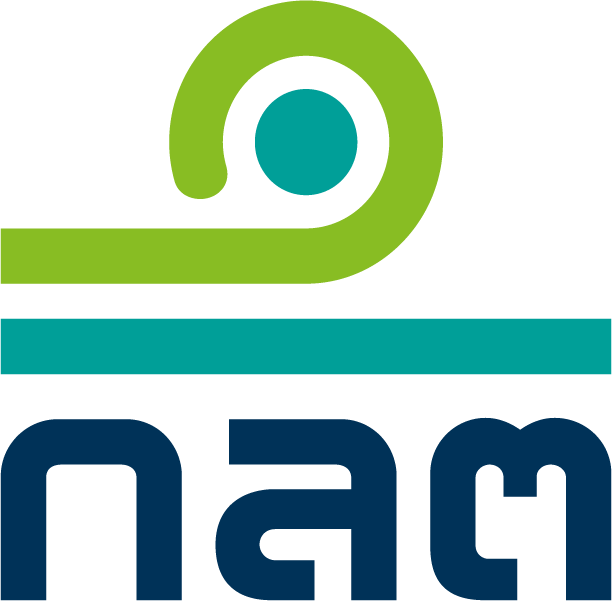
Fund Fact Sheet หรือ อีกที่เราคุ้นเคยกับชื่อ หนังสือชี้ชวนส่วนสรุปข้อมูลสำคัญของกองทุนรวม โดยจะให้ข้อมูลสำคัญของกองทุนรวม อาทิเช่น นโยบายการลงทุน ลักษณะผลตอบแทน ความเสี่ยง และข้อมูลสำคัญที่นักลงทุนอย่างเราควรรู้ทั้งหมดเกี่ยวกับกองทุนรวมนั้นๆ
“กองทุนรวม” ถือเป็นอีกหนึ่งเครื่องมือทางการเงินและการลงทุนที่สำคัญของคนทำงาน ที่จะช่วยให้แผนการลงทุนเพื่อการเกษียณสำเร็จได้ง่ายและไวมากขึ้น
แต่อยู่ดีๆ เราจะลงทุนเลยไม่ได้ถ้าเราไม่ศึกษาและทำความเข้าใจกับสิ่งที่เราลงทุน เพราะเรื่องของการลงทุนในกองทุนรวม มีรายละเอียด และ มีเรื่องของความเสี่ยงในการลงทุนเข้ามาเกี่ยวข้องด้วย
การลงทุนไปโดยไม่หาข้อมูล หรือ ไม่ได้ทำการประเมินความเสี่ยง ก็เหมือนกับอาการตาบอด คลำช้าง กลายเป็นการเก็งกำไร หรือ พึ่งดวง มากกว่าการเป็นนักลงทุนตัวจริงไป
นักลงทุน “กองทุนรวม” ต้องเข้าใจ “Fund Fact Sheet”
“Fund Fact Sheet” คือ หนังสือชี้ชวนส่วนสรุปข้อมูลสำคัญของกองทุน เพื่อให้นักลงทุน ได้ศึกษาข้อมูลและเปรียบเทียบกับกองทุนประเภทเดียวกันของหลายๆ บลจ. ก่อนการตัดสินใจลงทุนได้
มันคือ ลายแทง การลงทุนของเรา เพราะ หนังสือชี้ชวนส่วนสรุปข้อมูลสำคัญของกองทุนรวม จะบอกสรรพคุณของกองทุนนั้นๆ ว่าเป็นอย่างไร? ตรงกับวัตถุประสงค์ของการลงทุน และ สอดคล้องกับความเสี่ยงที่เรารับได้หรือไม่
ดังนั้น ก่อนจะตัดสินใจเลือกลงทุนกองทุนใดก็ตาม เราต้องอ่าน Fund Fact Sheet และทำความเข้าใจให้ละเอียดเสียก่อน จะได้ไม่ลงทุนผิดวัตถุประสงค์ และผิดเป้าหมายทางการเงินและการลงทุนของเรา
ใน “หนังสือชี้ชวนส่วนสรุปข้อมูลสำคัญของกองทุนรวม ” บอกอะไรเราบ้าง?
ถ้าเราไปขอข้อมูล “Fund Fact Sheet” ของกองทุนใดกองทุนหนึ่งจาก บริษัทหลักทรัพย์จัดการกองทุน (บลจ.) หรือจากผู้ขายกองทุน หรือ ไปลอง Download ข้อมูลจากเว็บไซต์ จาก https://market.sec.or.th/public/idisc/th/Product/Filing เราก็จะได้ “หนังสือชี้ชวนส่วนสรุปข้อมูลสำคัญของกองทุนรวม ” ของกองทุนที่เราสนใจ หรือ ที่อยากจะศึกษา
สำหรับข้อมูลใน “หนังสือชี้ชวนส่วนสรุปข้อมูลสำคัญของกองทุนรวม” ที่ต้องใช้ในการพิจารณาเลือกกองทุนนั้น หลักๆ ก็มีอยู่ ดังต่อไปนี้
ข้อมูลเบื้องต้นของกองทุนรวม
ข้อมูลที่เราเอามาพิจารณา เป็นข้อมูลล่าสุดหรือไม่ โดยให้เราสังเกตจากด้านมุมบนขวามือ ว่าเป็นข้อมูลที่อัพเดทล่าสุดหรือไม่ หลายคนพลาด ไปดูข้อมูลเก่า ก็อาจจะทำให้วิเคราะห์ และ เลือกผิดกองทุนได้
ชื่อกองทุนรวม ตรวจสอบชื่อกองทุนว่าใช่กองที่เราสนใจ และ ถูกต้องหรือไม่ เนื่องจากมีกองทุนเยอะมาก ใช้ตัวย่อคล้ายๆ กันก็เยอะ เรื่องนี้ก็ต้องดุให้แน่ใจว่าดูถูกตัวด้วยเช่นกัน
ประเภทของกองทุนรวม เป็นกองทุนประเภทไหน เช่น กองทุนรวมตราสารทุน กองทุนรวมตราสารหนี้
นโยบายการลงทุน หรือ สัดส่วนของประเภททรัพย์สินที่ลงทุน
ดูว่ากองทุนนั้นลงทุนในสินทรัพย์ประเภทไหน เช่น เน้นลงทุนในหุ้นที่จดทะเบียนในตลาดหลักทรัพย์แห่งประเทศไทย
กองทุนมีกลยุทธ์การลงทุนแบบไหน active หรือ passive (กองทุน Active คือลงทุนให้ผลตอบแทนเอาชนะเกณฑ์มาตรฐานหรือตัวชี้วัด (Bench mark) ส่วนกองทุน Passive คือลงทุนให้ผลตอบแทนใกล้เคียงตามตัวชี้วัด > โดยปกติแล้ว หากเป็นกองทุนแบบ active นักลงทุนก็จะคาดหวังผลตอบแทนที่สูง ซึ่งก็มาพร้อมกับค่าธรรมเนียมกองทุนที่สูงกว่าแบบ passive นั่นเอง
ระดับความเสี่ยงของกองทุนรวม
กองทุนรวมจะมีระดับความเสี่ยงตั้งแต่ 1 ถึง 8 โดยระดับ 1 คือ ความเสี่ยงต่ำ เช่น กองทุนรวมตลาดเงินที่ลงทุนในประเทศ ระดับ 8 คือ ความเสี่ยงสูงมาก เช่น กองทุนรวมที่ลงทุนในสินค้าโภคภัณฑ์ อาทิ น้ำมัน ทองคำ
ซึ่งต้องมาดูว่าเรายอมรับความเสี่ยงได้แค่ไหน เหมาะสมกับระดับความเสี่ยงของกองทุนรวมที่เราจะลงทุนหรือไม่
ซึ่งโดยปกติก่อนทำการซื้อกองทุน หรือ ในการลงทุนครั้งแรก เจ้าหน้าที่ที่ขายกองทุน จะให้เราทำแบบประเมินความเสี่ยง (suitability test) เพื่อทดสอบว่าเรารับความเสี่ยงได้ในระดับใด
ในเรื่องของการลงทุน ใครๆ ก็อยากได้ผลตอบแทนสูงๆ ความเสี่ยงต่ำๆ ด้วยกันทั้งนั้น แต่ในความเป็นจริง ความเสี่ยงกับผลตอบแทนเป็นของคู่กัน ตามคำที่ว่า “high risk high return”
ชื่อทรัพย์สินและสัดส่วนของประเภททรัพย์สินที่กองทุนรวมเลือกลงทุน
เราต้องดูว่ากองทุนรวมนั้นลงทุนในสินทรัพย์ประเภทใด? เป็นสัดส่วนเท่าไหร่บ้าง?
ตรงกับนโยบายการลงทุนไหม จากนั้นก็มาดูรายชื่อของสินทรัพย์ที่มีการลงทุนสูงสุด 5 อันดับแรก
โดยค่าธรรมเนียมของกองทุนรวมจะแบ่งเป็น 2 ส่วน คือ ค่าธรรมเนียมที่เรียกเก็บจากกองทุนรวม คิดเป็น % ต่อปีของ NAV เป็นค่าใช้จ่ายในการบริหารจัดการกองทุน เช่น ค่าธรรมเนียมการจัดการ ผู้ดูแลผลประโยชน์ นายทะเบียน โดยจะถูกคิดและหักออกทุกวัน
และ ค่าธรรมเนียมที่เรียกเก็บจากผู้ถือหน่วยลงทุน คิดเป็น % ของมูลค่าซื้อขาย เช่น ค่าธรรมเนียมการขาย การรับซื้อคืน การสับเปลี่ยน ซึ่งจะถูกคิดรวมในราคาซื้อขายแล้ว
ผลการดำเนินงานย้อนหลัง
หากกองทุนรวมที่เราสนใจ เป็นกองทุนที่เปิดมาสักระยะนึงแล้ว การดูผลการดำเนินงานย้อนหลังก็จะมีประโยชน์ เพราะ ใน “หนังสือชี้ชวนส่วนสรุปข้อมูลสำคัญของกองทุนรวม” จะแสดงผลการดำเนินงานย้อนหลัง มีการเทียบกับเกณฑ์มาตรฐาน (Benchmark) ที่เป็นเกณฑ์วัดผลของกองทุนรวม และมีการเทียบกับเพื่อน (Peer Performance) ด้วย
เราก็ดูเทียบกันในแต่ละปีว่ากองทุนมีผลตอบแทนสม่ำเสมอหรือไม่ เหวี่ยงหรือไม่ เทียบกับเกณฑ์มาตรฐาน (Benchmark) ด้วยว่าทำได้สูงกว่าหรือต่ำกว่า?
นอกจากนี้เราสามารถเทียบกับเพื่อนในกลุ่มเดียวกันได้ด้วยว่าเราอยู่ในช่วงไหนของเพื่อน หากผลตอบแทนของกองทุนที่เราสนใจ อยู่ในกลุ่ม percentile น้อย ๆ ยิ่งดี เพราะกลุ่ม percentile น้อย คือ กลุ่มที่ทำผลตอบแทนได้อันดับต้นๆ เช่น กลุ่ม 5th Percentile คือ กลุ่มที่ทำผลตอบแทนได้ 5 %แรก ของกลุ่ม
การดูผลตอบแทนถือเป็นข้อมูลที่สร้างความมั่นใจให้กับเราที่ระดับนึง แต่ก็อย่าลืมว่าผลการดำเนินงานในอดีตไม่ได้ยืนยันผลการดำเนินงานในอนาคตนะครับ
ข้อมูลอื่นๆ
กองทุนมีนโยบายจ่ายปันผลหรือไม่ > บางคนต้องการผลตอบแทนระหว่างทาง ก็จะเหมาะกับกองทุนที่จ่ายปันผล
แต่บางคนชอบถือยาวๆเพื่อเงินก้อนโตในปลายทาง ก็จะเหมาะกับกองทุนที่ไม่จ่ายปันผล เพราะเมื่อกองทุนไม่ปันผล ก็จะนำเงินก้อนนั้นมาทบเข้าไปในกองทุน และทำให้มูลค่าของกองทุนเพิ่มขึ้น
ข้อมูลการซื้อขายหน่วยลงทุน
ในส่วนนี้ กองทุนรวมแต่ละกองทุน ก็จะมีการกำหนดวันเวลา และจำนวนเงินขั้นต่ำของการซื้อ-ขายหน่วยลงทุน โดยระบุเอาไว้อย่างชัดเจน เช่น ซื้อได้ทุกวันทำการ ตั้งแต่เวลา 8:30 – 15:30 และ มูลค่าขั้นต่ำในการซื้อครั้งแรก 500 บาท หรือ มูลค่าขั้นต่ำในการซื้อครั้งถัดไป 500 บาท เป็นต้น
ถ้าอ่านถึงตรงนี้แล้ว เราก็จะรู้แล้วว่า “หนังสือชี้ชวนส่วนสรุปข้อมูลสำคัญของกองทุนรวม” มีความสำคัญอย่างไร?
สุดท้าย อย่าลืมว่า ทุกๆ การลงทุนนั้นมีความเสี่ยงก็จริง แต่ถ้าไม่ลงทุน หรือ ไม่ออมเงินเอาไว้เลยตั้งแต่ตอนนี้ จะเสี่ยงยิ่งกว่า และถ้าหากเข้าใจข้อมูลใน “หนังสือชี้ชวนส่วนสรุปข้อมูลสำคัญของกองทุนรวม” เราก็จะสามารถลงทุนได้ตอบโจทย์ของเรา และเหมาะกับเรามากที่สุดนั่นเอง

บทความอื่นๆ ที่เกี่ยวกับ การเงินและการลงทุน สามารถอ่านเพิ่มเติมได้ที่ :
DCA – Dollar-Cost Averaging วิธีการสร้างวินัยในการลงทุน
การลงทุนในหุ้นกู้ เราจำเป็นจะต้องมีความรู้ในเรื่องอะไรบ้าง?







